For ten days we’ve been hanging out in Johannesburg taking care of business as usual or, in Carla’s case, unusual. After several weeks of observation and intermittent participation, I’ve decided that Carla’s life fulfills the old definition of self-employment – working 100 hours a week to avoid working a 40-hour week. Some of us will do anything to remain independent and explore the deliberately thin lines between work and play!
Yesterday the play included cutting and bending the wire handles for the metal candle sculptures that Carla sells at the market. It took only one hour to get a nice blister inside the finger I used to squeeze the wire bender tool, but Carla let me know that if I want to hear about some really interesting jobs I can ask her brother about the things he has helped Carla create over the years.
Living and working with Carla also involves a lot of moving things around. From the house to the garage. From the garage to the yard. From the yard to the market with a few more times in and out of the car and garage depending on what we are making and what the weather is doing. Moving baskets from KwaZulu-Natal province to Johannesburg is just one little part.
And we’ve added a little terrier named Spotty to our day’s work and play. Spotty belongs to Carla’s friends Sue and Trevor who have gone to the states on holiday. We are housesitting so that Spotty has someone to entertain. The only real work is unlocking all the doors and gates whenever we take Spotty out for a walk. The house and garden are lovely but the security measures troublesome to one who comes from a place where I come and go without locking anything and carry only one key – to start my car. I know from what I’ve seen and heard that the security here is warranted. But it still defies common sense for me – that crime should reach such a level and that people can live with such onerous “protection.”
Political and cultural and lifestyle scenarios aside, the most basic differences that disorient me are the physical matters of time and space. I’ve gotten used to subtracting ten hours from the day before I call my sweetie, but I have to continually remind myself that the folks back at home are moving quickly into winter as I walk around under a warm spring sun. Summer will be in full blast here by Christmas time. But I don’t need to worry about being seasonally troubled then because I’ll be back in the dark and cold latitude of 60 degrees north.
Way back last June, it was strange to leave Alaska’s 18-hour days and plop down into Uganda’s equatorial twelve hours of daylight and twelve hours of dark. Now I’m getting used to other strange things, like facing north into the sun. Carla’s flat is always cool and dark because it faces south – very strange for a sun-loving, south-leaning Alaskan. I’ve also apparently been fooled by birdsong. For weeks I kept hearing a cuckoo clock and finally asked Carla, “Does Natascha have a clock that keeps cuckoo-ing?” (Natascha is the German woman who lives above us). Turns out I’m hearing the real thing – birds making their two-tone call. As if to highlight my disorder, the words to the Old English cuckoo song arrived in an email – Sumer is icumen in, lhude sing cuccu!
Traveling from the far north to the equator and then to the southern hemisphere makes one become a new learner of simple things, not just the sun’s habits but how to handle my own habits, like what food to buy from street vendors, where to exchange currency, how to load air time onto a cell phone and make a call. Each time I cross a border I learn greetings and thank yous in a new language – so many languages in Africa! Now in South Africa I am re-learning English. When I thank someone here, they do not say “You’re welcome” or “No problem” but instead just smile and say “Pleasure.”
My friend Paula in Alaska said something recently that reminded me how it’s not only hemispheres that can flip. She observed that at 25 she was working with Cambodian refugees along the Thai border, while I was starting to raise children. Now my daughters are grown and I am out doing my own volunteer work, while Paula is a new mom. Many ways to navigate through a lifetime!
It’s not just the small things of everyday existence that compel – how to phone a friend, what to eat, where to lay my head tonight. It’s the big things as well – what am I doing here, in this particular place, in this body and this life? Questions of survival and purpose come with equal urgency.
Auden’s phrase “altogether elsewhere” keeps echoing in my head. I have a sensation of being somewhere where things are all turned around or at least out of kilter, and it doesn’t feel very poetic. But it’s not always a bad thing to misread cues, mistake a bird for a clock, and feel like a foolish foreigner. It keeps my brain and heart alert and my sense of humor intact. It also keeps me present. For instance when Spotty – who has one auspicious spot – wants to play, we stop everything else and just play. And last night, at the Moonlight Market (with Spotty safely at home), I walked around in the warm night air and noticed one beautiful sight – Carla’s candles lighting up the tea garden.
Wednesday, October 31, 2007
Wednesday, October 17, 2007
The Swazi, Zulu, and Drakensberg circle
Roadtripping and camping with Carla is a great way to experience South Africa. We’ve just returned from an eleven-day trip that took us east to Swaziland then south into KwaZulu province and then back to Johannesburg by way of the Drakensberg Mountains.
We went to Swaziland to visit some friends of Carla’s and just to look, hike, and camp. It takes only five hours to drive from Johannesburg to Mbabane, the capital of this small, independent country – actually a Kingdom ruled by a Swazi king and his mother – located entirely within the borders of South Africa. We stayed in the Malkerns Valley at a place called Nyanza Cottages but we preferred to camp rather than stay in a cottage. We had a whole meadow with jacaranda trees and hibiscus and a view of the mountains, and peacocks wandered in and out of our area and sometimes perched in the trees above us. In the morning, as we ate papaya and Tia’s muesli with rice milk, a whole clan of vervet monkeys came into the orchard next to our campsite and watched us through the branches.
The last time we had pitched a tent together was on the Nebraska shores of Lewis & Clark Lake when we were teenagers. I’m not sure if we’ve changed much since then but our eating habits have definitely improved. In those days we kept our six-pack of Coke chilled in the lake, and if we cooked it was probably hot dogs over a fire or a Girl Scout foil pack. I also remember that it rained hard one night while the two of us were camped at Weigand and Carla suggested we dig a trench around our tent to capture the rainwater and keep ourselves dry. The trench plan didn’t work very well but we had fun digging it in the middle of the night and laughing so hard it didn’t matter that we got soaked.
Last week we spent two nights in Swaziland and both nights it rained. But we were cozy and secure in Carla’s big tent with a fly that kept us and the whole tent dry. There is nothing more wonderful than being snug in a sleeping bag and listening to rain on a tent roof. By morning the thunder and lightning and wind were finished, and the roosters and hens and chicks were crowing and pecking and running around the yard. The sun rose from behind the mountains and by afternoon it was bright and dry.
Carla’s friends told us that Swaziland was settled by people coming north from Zululand seeking a peaceful kingdom. Somehow the mountains and broad valleys exude a sense of restfulness even to one just passing through. We spent some time having coffee and seeing the art work sold at a place called Gone Rural, which markets crafts made by Swazi women and employs lots of local people in a restaurant as well. We also drove through a little game reserve, but it was so hot we just pulled over and sat back and ate our avocado and corn cakes.
The middle part of our trip was the basket buying in KwaZulu. Carla has been buying baskets from Zulu weavers since 1994 and selling them in Johannesburg. Before we ever left Jo’burg, she described the roads she drives when she makes these trips and the weavers whose work she markets. But I continually had an “ohhhh, that’s what she meant” sensation as the experience actually unfolded. She had told me there was one time when she drove to KwaZulu, bought a whole load of baskets, and drove back to Jo’burg the next day. But she said it usually takes two or three or maybe even four days. I didn’t understand how it could take that much time. In my image of the process, Carla simply made the purchases from a large group of women, like at a marketplace where everyone has gathered to sell their wares. I was soooo mistaken.
The first morning we left just after sunrise and drove an hour on a tarred highway before turning off on a little road that was scarcely discernable from a trail. When we got to a rickety set of sticks strung together with wire and stretched across the roadway, Carla stopped so I could hop out and open the gate. This brought us to the homestead of Rosalia, who came out to meet us carrying a large bulging shape wrapped in a blanket. She pulled off the blanket and handed Carla a beautiful basket, saying how much she wanted for it. They agreed on the price and Carla handed me a notebook to start recording the transactions. Rosalia also produced a basket made by a neighbor who was hoping to sell it to Carla, and a third woman showed up with some baskets she had made as well. Carla knows just enough Zulu (and Rosalia just enough English) to communicate the basics. The rest, as far as I could tell, is understood more by relationship and tone and mutual intention than by actual words.
The stop at Rosalia’s was just the beginning. Later that morning we were high in the hills of KwaZulu on a clay road bed that curved alongside gullies and eucalyptus trees and ascended into thick fog that made the distant hills disappear from view. This was the one time we got stuck. We were on a steep stretch and the road was muddy from all the recent rain. But with Carla’s driving and my pushing and a bunch of sticks under the tires for traction, we managed to get unstuck. Carla called one of the weavers who has a cell phone and the word went out to find us atop this ridge. So we sat there in Carla’s Toyota Venture for about an hour before weavers began to arrive, first some young girls with their mothers’ baskets and then some older ladies and then another and another, all carrying baskets in bags and blankets atop their heads and hoisted at their sides. One by one, they showed their work to Carla. For every purchase, I wrote the weaver’s name and the size of the basket and then I counted out the payment for each happy weaver.
We finished on the third morning. In all, Carla bought enough baskets to fill every cranny in her vehicle and I met several groups of weavers who came out of the hills, literally. Wherever Carla stopped, women would emerge from distant houses. “Cahla!” they would call, as though they’d been expecting her for weeks, even if some of their baskets had long strands of ilala palm still sticking out from the rim. “Tomorrow! I will finish tomorrow. What time will you come back?” When Carla introduced me as her cousin, someone always grabbed my hand to greet me with the same triple handshake that so many east Africans use, but the Zulu names were new for me – names like Zandile, Tholi, Phindile, Thandi, and Sibongile. One girl introduced herself as Beyonce, snapping her fingers and doing a little dance move as she spelled her name for me. Carla told me it was a new name since her last trip.
Most of the time I had no idea where we were or which river we had crossed, but Carla seems to know by heart the remote, beautiful land where Zulu homesteads and gardens are scattered amongst a network of winding roads. The one route I did learn was the corridor road through Hluhluwe and Imfolozi game parks that we drove each day as we came inland from the St. Lucia wetlands where we stayed. “Keep your eyes open for wildlife,” Carla told me as we drove to the weavers. One morning a couple elephants were visible from the road, then buffalo, then impala. One late afternoon driving back we came upon five rhinos just beside the road.
We decided to spend a night in the Hluhluwe game reserve when our basket work was done, so we stayed in a rondavel at the Hilltop rest camp. That afternoon we drove leisurely through the park. It was fun to round the first bend and come upon two elephants doing some serious tree munching. We sat still and watched them reach their trunks up into one tree after another. Huge branches came crashing down, and those elephants curled their trunks around those leafy branches and scooped them up into their mouths like candy. Later, all the warthogs we came upon were skittish and ran off before we got close. We saw zebra and impala and other kinds of antelope, and guinea fowl in the low grass along the road. In the early morning as we drove slowly out of the park, several groups of giraffe were grazing near the road, and we saw more elephants and zebras as well. But my favorite sight was a dung beetle pushing its little round prize across the road right in front of us.
We drove south along the coast and buzzed right through Durban with one stop (at a great crafts place on the harbor called the Bat Centre) then we turned inland again toward the Drakensberg. I remembered this range from a trek I did in 1973 – somewhere in these mountains though I have no idea where exactly – and Carla has spent some time here too. We found a lovely campground near Cathedral Peak which we made our “base camp” for a little exploring and hiking. We had a wonderful hike to some waterfalls and a pool that reminded me of Hawaii (so of course I went in) and we also saw San Bushmen rock paintings. So exciting to find depictions of eland and hunters leaping with their bows.
So Carla is reintroducing me to South Africa and reminding me of who we are. It amazes me how she speaks like her mom at times and makes faces that look just like her dad. The same goes for me, of course. One time I made some remark and Carla exclaimed, “You sound exactly like your mom!” And then the last time we were setting up the tent, I went up to Carla with some serious comment that made her bend over with laughter. “The way you folded your hands in front of your waist when you said that! That’s exactly what Donnie does!” Hmmm, I don’t know what possessed me to take that pose, but I had to admit she had a point. My dad does stand like that sometimes. Carla and I may be on the other side of the earth but we’re still two girls from Wausa.
We went to Swaziland to visit some friends of Carla’s and just to look, hike, and camp. It takes only five hours to drive from Johannesburg to Mbabane, the capital of this small, independent country – actually a Kingdom ruled by a Swazi king and his mother – located entirely within the borders of South Africa. We stayed in the Malkerns Valley at a place called Nyanza Cottages but we preferred to camp rather than stay in a cottage. We had a whole meadow with jacaranda trees and hibiscus and a view of the mountains, and peacocks wandered in and out of our area and sometimes perched in the trees above us. In the morning, as we ate papaya and Tia’s muesli with rice milk, a whole clan of vervet monkeys came into the orchard next to our campsite and watched us through the branches.
The last time we had pitched a tent together was on the Nebraska shores of Lewis & Clark Lake when we were teenagers. I’m not sure if we’ve changed much since then but our eating habits have definitely improved. In those days we kept our six-pack of Coke chilled in the lake, and if we cooked it was probably hot dogs over a fire or a Girl Scout foil pack. I also remember that it rained hard one night while the two of us were camped at Weigand and Carla suggested we dig a trench around our tent to capture the rainwater and keep ourselves dry. The trench plan didn’t work very well but we had fun digging it in the middle of the night and laughing so hard it didn’t matter that we got soaked.
Last week we spent two nights in Swaziland and both nights it rained. But we were cozy and secure in Carla’s big tent with a fly that kept us and the whole tent dry. There is nothing more wonderful than being snug in a sleeping bag and listening to rain on a tent roof. By morning the thunder and lightning and wind were finished, and the roosters and hens and chicks were crowing and pecking and running around the yard. The sun rose from behind the mountains and by afternoon it was bright and dry.
Carla’s friends told us that Swaziland was settled by people coming north from Zululand seeking a peaceful kingdom. Somehow the mountains and broad valleys exude a sense of restfulness even to one just passing through. We spent some time having coffee and seeing the art work sold at a place called Gone Rural, which markets crafts made by Swazi women and employs lots of local people in a restaurant as well. We also drove through a little game reserve, but it was so hot we just pulled over and sat back and ate our avocado and corn cakes.
The middle part of our trip was the basket buying in KwaZulu. Carla has been buying baskets from Zulu weavers since 1994 and selling them in Johannesburg. Before we ever left Jo’burg, she described the roads she drives when she makes these trips and the weavers whose work she markets. But I continually had an “ohhhh, that’s what she meant” sensation as the experience actually unfolded. She had told me there was one time when she drove to KwaZulu, bought a whole load of baskets, and drove back to Jo’burg the next day. But she said it usually takes two or three or maybe even four days. I didn’t understand how it could take that much time. In my image of the process, Carla simply made the purchases from a large group of women, like at a marketplace where everyone has gathered to sell their wares. I was soooo mistaken.
The first morning we left just after sunrise and drove an hour on a tarred highway before turning off on a little road that was scarcely discernable from a trail. When we got to a rickety set of sticks strung together with wire and stretched across the roadway, Carla stopped so I could hop out and open the gate. This brought us to the homestead of Rosalia, who came out to meet us carrying a large bulging shape wrapped in a blanket. She pulled off the blanket and handed Carla a beautiful basket, saying how much she wanted for it. They agreed on the price and Carla handed me a notebook to start recording the transactions. Rosalia also produced a basket made by a neighbor who was hoping to sell it to Carla, and a third woman showed up with some baskets she had made as well. Carla knows just enough Zulu (and Rosalia just enough English) to communicate the basics. The rest, as far as I could tell, is understood more by relationship and tone and mutual intention than by actual words.
The stop at Rosalia’s was just the beginning. Later that morning we were high in the hills of KwaZulu on a clay road bed that curved alongside gullies and eucalyptus trees and ascended into thick fog that made the distant hills disappear from view. This was the one time we got stuck. We were on a steep stretch and the road was muddy from all the recent rain. But with Carla’s driving and my pushing and a bunch of sticks under the tires for traction, we managed to get unstuck. Carla called one of the weavers who has a cell phone and the word went out to find us atop this ridge. So we sat there in Carla’s Toyota Venture for about an hour before weavers began to arrive, first some young girls with their mothers’ baskets and then some older ladies and then another and another, all carrying baskets in bags and blankets atop their heads and hoisted at their sides. One by one, they showed their work to Carla. For every purchase, I wrote the weaver’s name and the size of the basket and then I counted out the payment for each happy weaver.
We finished on the third morning. In all, Carla bought enough baskets to fill every cranny in her vehicle and I met several groups of weavers who came out of the hills, literally. Wherever Carla stopped, women would emerge from distant houses. “Cahla!” they would call, as though they’d been expecting her for weeks, even if some of their baskets had long strands of ilala palm still sticking out from the rim. “Tomorrow! I will finish tomorrow. What time will you come back?” When Carla introduced me as her cousin, someone always grabbed my hand to greet me with the same triple handshake that so many east Africans use, but the Zulu names were new for me – names like Zandile, Tholi, Phindile, Thandi, and Sibongile. One girl introduced herself as Beyonce, snapping her fingers and doing a little dance move as she spelled her name for me. Carla told me it was a new name since her last trip.
Most of the time I had no idea where we were or which river we had crossed, but Carla seems to know by heart the remote, beautiful land where Zulu homesteads and gardens are scattered amongst a network of winding roads. The one route I did learn was the corridor road through Hluhluwe and Imfolozi game parks that we drove each day as we came inland from the St. Lucia wetlands where we stayed. “Keep your eyes open for wildlife,” Carla told me as we drove to the weavers. One morning a couple elephants were visible from the road, then buffalo, then impala. One late afternoon driving back we came upon five rhinos just beside the road.
We decided to spend a night in the Hluhluwe game reserve when our basket work was done, so we stayed in a rondavel at the Hilltop rest camp. That afternoon we drove leisurely through the park. It was fun to round the first bend and come upon two elephants doing some serious tree munching. We sat still and watched them reach their trunks up into one tree after another. Huge branches came crashing down, and those elephants curled their trunks around those leafy branches and scooped them up into their mouths like candy. Later, all the warthogs we came upon were skittish and ran off before we got close. We saw zebra and impala and other kinds of antelope, and guinea fowl in the low grass along the road. In the early morning as we drove slowly out of the park, several groups of giraffe were grazing near the road, and we saw more elephants and zebras as well. But my favorite sight was a dung beetle pushing its little round prize across the road right in front of us.
We drove south along the coast and buzzed right through Durban with one stop (at a great crafts place on the harbor called the Bat Centre) then we turned inland again toward the Drakensberg. I remembered this range from a trek I did in 1973 – somewhere in these mountains though I have no idea where exactly – and Carla has spent some time here too. We found a lovely campground near Cathedral Peak which we made our “base camp” for a little exploring and hiking. We had a wonderful hike to some waterfalls and a pool that reminded me of Hawaii (so of course I went in) and we also saw San Bushmen rock paintings. So exciting to find depictions of eland and hunters leaping with their bows.
So Carla is reintroducing me to South Africa and reminding me of who we are. It amazes me how she speaks like her mom at times and makes faces that look just like her dad. The same goes for me, of course. One time I made some remark and Carla exclaimed, “You sound exactly like your mom!” And then the last time we were setting up the tent, I went up to Carla with some serious comment that made her bend over with laughter. “The way you folded your hands in front of your waist when you said that! That’s exactly what Donnie does!” Hmmm, I don’t know what possessed me to take that pose, but I had to admit she had a point. My dad does stand like that sometimes. Carla and I may be on the other side of the earth but we’re still two girls from Wausa.
Friday, October 5, 2007
Foreign travel as an antidote to fear
Since arriving in Africa, I’ve been so immersed in new people and places that each time I’ve sat down to write I’ve just processed the latest experience and not said a word about overarching matters. Lately I’ve had time to catch my breath and ponder what the heck I’m doing, and I want to download thoughts on one of those global matters: fear and the traveling girl. (OK, more accurately, the older woman traveler).
Before leaving Alaska, I was astounded at the worried comments and sober admonitions I received. “Uganda?” almost everyone repeated with an appraising look. “Do be careful.” It’s hard to say whether people were assessing my sanity or their recall of African geography and events, but I did tell more than one person that Idi Amin has been gone a long time and that Uganda might in fact be an interesting place to visit.
I remember an incident from two years ago when my daughter Hanna and I drove our old Subaru from Anchorage to the east coast. Driving down the Alaska Highway late in August, we pulled into a gas station one afternoon in a little town in northern British Columbia. As the young Canadian man filled the tank, he asked us where we were going. “New York City,” I told him. His eyes flashed concern. “New York? Is it SAFE to go there?” he asked, glancing at Hanna and back at me. “Yes, it’s fine,” I told him, but he looked so dubious that I found myself explaining that millions of people live there and work and raise families and manage to survive. “I guess I’ve just seen the movies about New York,” he said. “It looks so dangerous I wouldn’t dare go there.”
He is right, of course. There are crimes and killings that happen every day in New York. And there are crimes and killings and health disasters and wars in Africa. But staying home in fear of the unknown just doesn’t make sense to me.
In the U.S., I live in the same media environment that everyone else is immersed in, and what pops into mind at the mention of Africa are the tragic things: Sudan and Darfur in particular, the terrible state of things in Zimbabwe, eruptions of violence by rebel soldiers in several regions, and so many refugees that the state of existence for many Africans seems to be in permanent flux.
My point is not that poverty and disease and danger should be ignored. My thought is that restricting knowledge to the headline news and fearing for my own safety is not a reason to stay away, or to stay ignorant, or to be fearful. Not that everyone needs to go traipsing off to remote corners of the world. Some of us have peripatetic feet and some of us are happier at home. As one who is called to wander and see for herself, I can say that the picture is so much bigger than any one of us sees and more multifaceted than the news media report.
What travel can do is inject doses of understanding into issues that seem overwhelming. It’s true that Africa has millions of children who have lost parents to HIV and AIDS. It’s uplifting to see firsthand the people and programs that are actively assisting those children. On my first day at Rakai, a counselor took us to visit a household where both parents had died in the last couple years. The counselor had just learned that the children were living there on their own. We knocked on the door and an eight-year-old boy answered. He talked to us shyly, telling us that his siblings were in school and a neighbor checked on them regularly. What struck me was not just the real face of this “child head of household” but also the counselor’s calm compassion in bringing care to this family of children.
And malaria, so big in the news, is more real than I ever imagined. People are continually getting it. Africans, that is. Like other northerners I’ve bumped into, I’m protected by the anti-malarial tablets I pop every week. Plus I usually sleep under a mosquito net. But for those born on this continent it’s a different story. Four or five people in the wedding group came down with malaria by the end of the two weeks of festivities. And Angela, the teacher I worked with at Rakai, got malaria the second week I was there. And Esther, who walked five kilometers each day to the Manor House workshop and symposium, came down with malaria after those events were over. And these are not impoverished Africans. They are people with more resilience than many others I’ve met, and they all took medicine to help them get over it and get on with life.
And refugees. Riding on the bus from northwestern Uganda back to Kampala after the wedding, we saw one IDP camp after another. (“Internally displaced persons” is the term used in Uganda and elsewhere.) Charlotte, who works with IDPs in Burundi and northern Tanzania through an NGO, told us about the UN-established camps we saw from the bus that morning after leaving Arua. “It started in 1986,” she said of the rebel activity in northern Uganda. “People run for shelter in schools or churches or wherever they can be safe.”
With so much suffering, it is surprising how much hope is held by so many people. Samuel, who I met in Kenya, showed me the gardens where he and two Manor House interns teach agricultural methods to farmers in the region who are beset by periodic droughts. Samuel and his wife Peris also work with women affected by HIV, teaching them gardening so they can meet their basic food needs and vocational skills so they can earn an income. Samuel and Peris have turned their living room into a resource center for their program, and they live with their two children in less space. In the yard outside, a big pile of bricks marks the place where they plan to expand their program space. They do not yet have money to build an expansion, but they have complete faith that it will happen.
I’m finding that tragedy is present in profound ways in Africa, but suffering is not the only reality. Resilience is here too, and kindness, and determination. In Uganda and Kenya I found such an entrepreneurial spirit and so much energy for building lives and livelihoods. Ugandans are especially receptive to visitors and often ask, “How do you find my country?” In Kenya I constantly heard Karibu! (welcome). In South Africa I’m still getting the feel for things. The infrastructure is leap years ahead of most countries to the north, but the political climate is testier.
As for the dangers that can beset a traveler, anyone who has experienced a theft or a mugging or a miserable experience with lodging or transportation knows that travel (whether foreign or domestic) is not always fun. If one is lucky enough to avoid serious misfortune, there is still the uncertainty of traveling where the language is unfamiliar and the cues (social, physical, or whatever) are even more undecipherable. When you can’t interpret words or faces or road signs, finding the way through a city or a situation can be difficult.
I follow my daughters’ instructions to not walk alone after dark and I take other basic precautions. I seek guidance from locals and hear their protectiveness, like the hotel staff in Kampala who told Dad and Don and my brother and me, before we exchanged our American dollars for Ugandan shillings, “Watch out, there are thieves everywhere.” And I file away Carla’s safeguards, like never leaving a car parked on the street in this city. But my idea of travel is not exactly the mainstream model. I choose safety but not luxury, and I’ll take adventure and economy over comfort and speed. I travel to learn more than anything else.
Most of all I follow my instincts about what to do and what not to do. A solo traveler has to be in tune with herself as well as the world around her, not just for safety but for the fullest experience. Traveling solo at 18 was a great introduction to the world. Traveling at 53 is even better. I get fewer passes and more respect, and I love how everyone from Kampala to Kitale to Johannesburg calls me Mama.
It is sad that people in the U.S. hear the worst about Africa and often fear the rest. The fact is, what I’ve experienced here is warmth, community spirit, human kindness, and a desire to make life better. Being here for this blink of time brings me close to what I regard as important – living consciously, having a real idea of how we are connected to each other, and seeing how each of us matters.
OK, enough musing! Tomorrow Carla and I leave for Swaziland and KwaZulu province. So now we need to pack for the road. But one more thing! October 8 is coming soon and I may be far removed from an internet connection so here’s an early HAPPY BIRTHDAY, MOM! 76 – woohoo!
Before leaving Alaska, I was astounded at the worried comments and sober admonitions I received. “Uganda?” almost everyone repeated with an appraising look. “Do be careful.” It’s hard to say whether people were assessing my sanity or their recall of African geography and events, but I did tell more than one person that Idi Amin has been gone a long time and that Uganda might in fact be an interesting place to visit.
I remember an incident from two years ago when my daughter Hanna and I drove our old Subaru from Anchorage to the east coast. Driving down the Alaska Highway late in August, we pulled into a gas station one afternoon in a little town in northern British Columbia. As the young Canadian man filled the tank, he asked us where we were going. “New York City,” I told him. His eyes flashed concern. “New York? Is it SAFE to go there?” he asked, glancing at Hanna and back at me. “Yes, it’s fine,” I told him, but he looked so dubious that I found myself explaining that millions of people live there and work and raise families and manage to survive. “I guess I’ve just seen the movies about New York,” he said. “It looks so dangerous I wouldn’t dare go there.”
He is right, of course. There are crimes and killings that happen every day in New York. And there are crimes and killings and health disasters and wars in Africa. But staying home in fear of the unknown just doesn’t make sense to me.
In the U.S., I live in the same media environment that everyone else is immersed in, and what pops into mind at the mention of Africa are the tragic things: Sudan and Darfur in particular, the terrible state of things in Zimbabwe, eruptions of violence by rebel soldiers in several regions, and so many refugees that the state of existence for many Africans seems to be in permanent flux.
My point is not that poverty and disease and danger should be ignored. My thought is that restricting knowledge to the headline news and fearing for my own safety is not a reason to stay away, or to stay ignorant, or to be fearful. Not that everyone needs to go traipsing off to remote corners of the world. Some of us have peripatetic feet and some of us are happier at home. As one who is called to wander and see for herself, I can say that the picture is so much bigger than any one of us sees and more multifaceted than the news media report.
What travel can do is inject doses of understanding into issues that seem overwhelming. It’s true that Africa has millions of children who have lost parents to HIV and AIDS. It’s uplifting to see firsthand the people and programs that are actively assisting those children. On my first day at Rakai, a counselor took us to visit a household where both parents had died in the last couple years. The counselor had just learned that the children were living there on their own. We knocked on the door and an eight-year-old boy answered. He talked to us shyly, telling us that his siblings were in school and a neighbor checked on them regularly. What struck me was not just the real face of this “child head of household” but also the counselor’s calm compassion in bringing care to this family of children.
And malaria, so big in the news, is more real than I ever imagined. People are continually getting it. Africans, that is. Like other northerners I’ve bumped into, I’m protected by the anti-malarial tablets I pop every week. Plus I usually sleep under a mosquito net. But for those born on this continent it’s a different story. Four or five people in the wedding group came down with malaria by the end of the two weeks of festivities. And Angela, the teacher I worked with at Rakai, got malaria the second week I was there. And Esther, who walked five kilometers each day to the Manor House workshop and symposium, came down with malaria after those events were over. And these are not impoverished Africans. They are people with more resilience than many others I’ve met, and they all took medicine to help them get over it and get on with life.
And refugees. Riding on the bus from northwestern Uganda back to Kampala after the wedding, we saw one IDP camp after another. (“Internally displaced persons” is the term used in Uganda and elsewhere.) Charlotte, who works with IDPs in Burundi and northern Tanzania through an NGO, told us about the UN-established camps we saw from the bus that morning after leaving Arua. “It started in 1986,” she said of the rebel activity in northern Uganda. “People run for shelter in schools or churches or wherever they can be safe.”
With so much suffering, it is surprising how much hope is held by so many people. Samuel, who I met in Kenya, showed me the gardens where he and two Manor House interns teach agricultural methods to farmers in the region who are beset by periodic droughts. Samuel and his wife Peris also work with women affected by HIV, teaching them gardening so they can meet their basic food needs and vocational skills so they can earn an income. Samuel and Peris have turned their living room into a resource center for their program, and they live with their two children in less space. In the yard outside, a big pile of bricks marks the place where they plan to expand their program space. They do not yet have money to build an expansion, but they have complete faith that it will happen.
I’m finding that tragedy is present in profound ways in Africa, but suffering is not the only reality. Resilience is here too, and kindness, and determination. In Uganda and Kenya I found such an entrepreneurial spirit and so much energy for building lives and livelihoods. Ugandans are especially receptive to visitors and often ask, “How do you find my country?” In Kenya I constantly heard Karibu! (welcome). In South Africa I’m still getting the feel for things. The infrastructure is leap years ahead of most countries to the north, but the political climate is testier.
As for the dangers that can beset a traveler, anyone who has experienced a theft or a mugging or a miserable experience with lodging or transportation knows that travel (whether foreign or domestic) is not always fun. If one is lucky enough to avoid serious misfortune, there is still the uncertainty of traveling where the language is unfamiliar and the cues (social, physical, or whatever) are even more undecipherable. When you can’t interpret words or faces or road signs, finding the way through a city or a situation can be difficult.
I follow my daughters’ instructions to not walk alone after dark and I take other basic precautions. I seek guidance from locals and hear their protectiveness, like the hotel staff in Kampala who told Dad and Don and my brother and me, before we exchanged our American dollars for Ugandan shillings, “Watch out, there are thieves everywhere.” And I file away Carla’s safeguards, like never leaving a car parked on the street in this city. But my idea of travel is not exactly the mainstream model. I choose safety but not luxury, and I’ll take adventure and economy over comfort and speed. I travel to learn more than anything else.
Most of all I follow my instincts about what to do and what not to do. A solo traveler has to be in tune with herself as well as the world around her, not just for safety but for the fullest experience. Traveling solo at 18 was a great introduction to the world. Traveling at 53 is even better. I get fewer passes and more respect, and I love how everyone from Kampala to Kitale to Johannesburg calls me Mama.
It is sad that people in the U.S. hear the worst about Africa and often fear the rest. The fact is, what I’ve experienced here is warmth, community spirit, human kindness, and a desire to make life better. Being here for this blink of time brings me close to what I regard as important – living consciously, having a real idea of how we are connected to each other, and seeing how each of us matters.
OK, enough musing! Tomorrow Carla and I leave for Swaziland and KwaZulu province. So now we need to pack for the road. But one more thing! October 8 is coming soon and I may be far removed from an internet connection so here’s an early HAPPY BIRTHDAY, MOM! 76 – woohoo!
Subscribe to:
Comments (Atom)

.jpg)






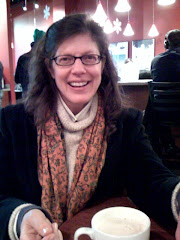





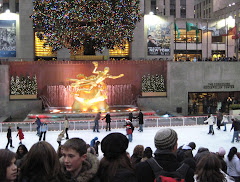.jpg)

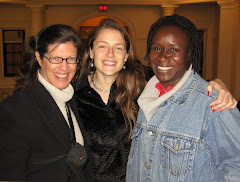.jpg)


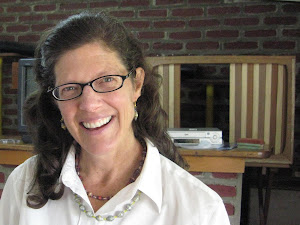.jpg)

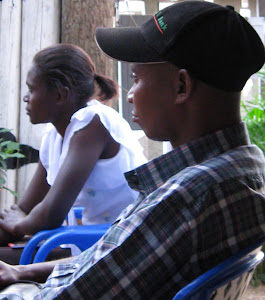.jpg)
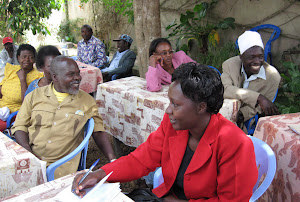.jpg)
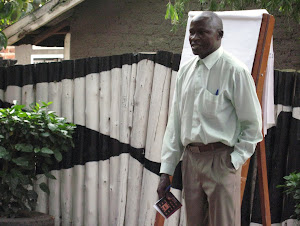.jpg)















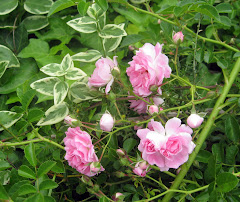












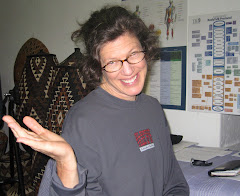



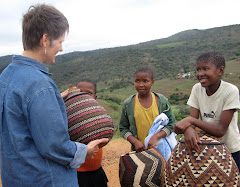.jpg)




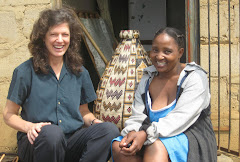










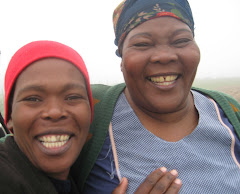.jpg)

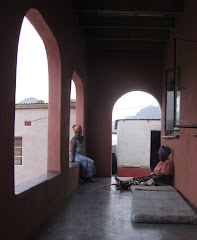.jpg)

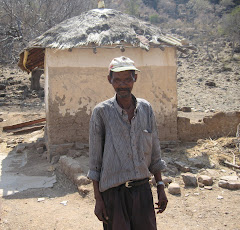.jpg)
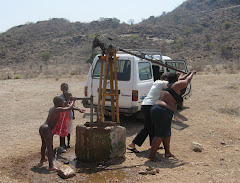.jpg)
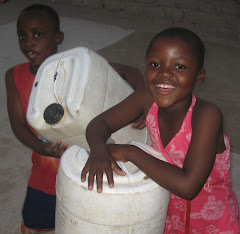.jpg)
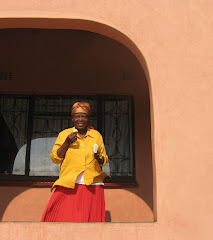.jpg)

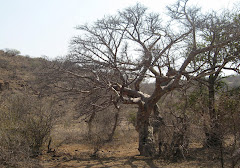.jpg)



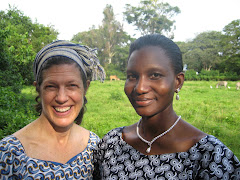



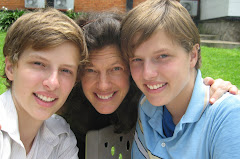.jpg)
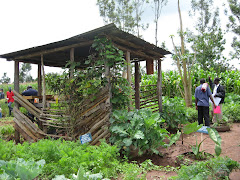
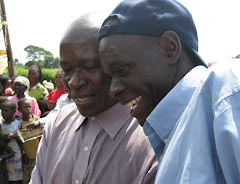.jpg)

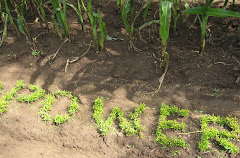.jpg)
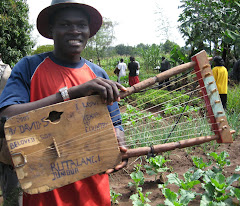.jpg)





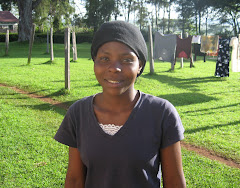.jpg)



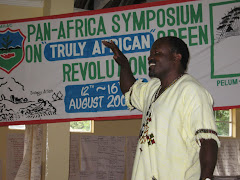

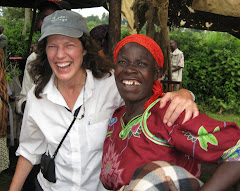.jpg)
















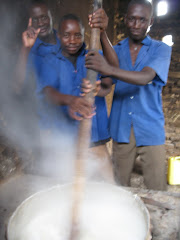.jpg)










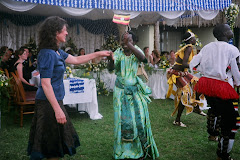.jpg)
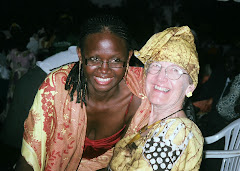.jpg)



